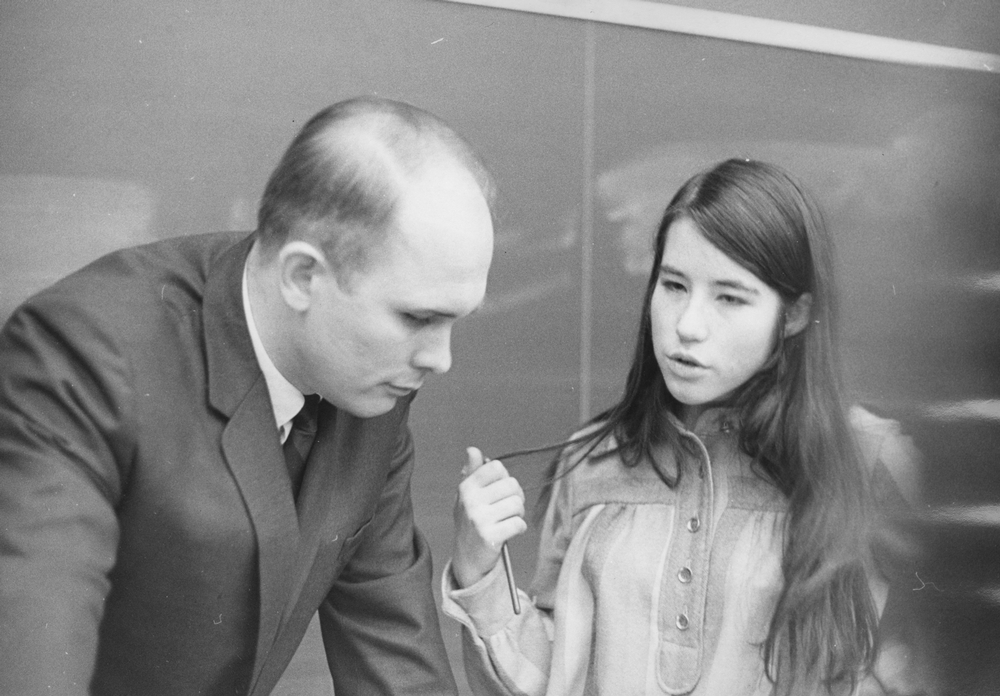Vice Chair of the Federal Reserve (Fed) Lael Brainard and journalist Bethany McLean discussed the state of the United States economy and the factors contributing to high inflation rates at an Institute of Politics (IOP) event on Thursday, January 19. The event, titled Inflation, Market, and What’s Up with the Economy Now?, centered around a keynote address from Brainard.
Brainard is an economist who previously served as the undersecretary of the Treasury for International Affairs under President Barack Obama. President Obama later appointed her to the Fed’s Board of Governors, where she served until 2022 when President Joe Biden nominated her as vice chair. She was sworn in on May 23, 2022.
McLean is a finance journalist who currently serves as a contributing editor for Vanity Fair. She was widely recognized for exposing the accounting irregularities that precipitated the 2001 Enron Corporation fraud scandal, and she was also praised for her investigative reporting on the 2008 global financial crisis.
Brainard prefaced her address by pointing out that while inflation is abnormally high, it is actually declining and that many indicators of the nation’s economic health are edging closer to their pre-pandemic levels. “Inflation has been declining over the last few months against a backdrop of moderate growth,” she said.
Brainard said that economic growth will occur slowly throughout next year because of central banks like the Fed “tightening” their fiscal and monetary policies. Tightening occurs when financial institutions raise interest rates to deliberately slow down economic growth to counteract inflation and prevent “overheating.” Overheating occurs when aggregate demand exceeds a nation’s total production capacity.
Brainard then explained some of the theorized causes of inflation. She discussed potential factors such as wages, retail markups, core goods, housing services, and non-housing services.
Starting with wages, Brainard rejected the idea that higher wages were contributing to inflation. She pointed out that the labor market has remained somewhat stagnant, with job openings remaining quite high, layoffs remaining below pre-pandemic levels, and a relatively low unemployment rate of 3.5 percent.
“Wages don’t appear to be driving inflation in a 1970s-style wage-price spiral. Wages have grown faster than the pace consistent with 2 percent inflation and productivity growth, but wages have grown slower than inflation over the past two years and aggregate real wages have fallen,” she said.
Brainard then moved onto retail markups, or the difference in how much a retailer pays for a product versus how much they sell the product for.
Brainard also disagreed with the notion that retail markups were causing inflation. In fact, she said that higher markups could be alleviating demand and helping to mitigate inflation: “In terms of retail markups, we have seen material increases in what could be described as a price-price spiral, whereby final prices have actually risen more than the increases in input prices in a variety of sectors, so the compression of those margins as supply constraints ease and inventories rise and demand cools could actually help with the disinflationary process.”
Brainard then addressed core goods inflation, or the change in the cost of goods and services outside of the food and energy sectors. She said that a steep decline in core goods inflation was in fact contributing the most to the overall decline in inflation: “Within that [overall decrease], core goods is the component bringing that down, and that reflects improvement in supply chains and cooling demand.”
Lastly, Brainard discussed housing and non-housing services as potential reasons for inflation levels remaining high, even if they are declining. She singled out housing services inflation as a prominent source: “[It’s] very high at about 8.8 percent on a three-month basis and we haven’t seen improvement there.”
She explained that housing services inflation has remained so high because the prices for renewed leases have remained abnormally high, even though the prices on new leases have actually fallen. She anticipates that renewing leases will eventually fall to match new leases and mitigate housing inflation.
As for non-housing services, Brainard said that the inflation in this area was exceptionally high as well: “The final thing we look at very intensely within inflation is non-housing services, and those, too, are running high, about 4.4 percent on a three-month basis.”
She didn’t offer a concrete reason for why this particular area of inflation remained so high, but did comment, “We do see some evidence that the persistent component [of inflation] in areas like recreation, transportation, food services, and accommodation… may actually be correlated with some of the movements we’ve seen in core goods.”
Brainard concluded her keynote by stating that the Fed would need to continue its tightened policies to return inflation levels back to the standard 2 percent, and she said this could be accomplished without a significant economic shock or loss of employment.
Following the keynote address, McLean moderated a conversation with Brainard and asked a series of questions concerning both domestic and global economic issues.
Several of McLean’s questions concerned the role of central banks and potential conflicts between the interests of central banks and the interests of governments. Brainard contended that while other nations may be facing tension between the monetary policies of their central banks and the fiscal policies of their governments, she believed the interests of the Fed and the United States government were relatively in concert with each other. “In that regard, I think the United States is actually in a pretty good position relative to some of our peers around the world,” Brainard said.
When asked if the Fed should be taking into account climate change and social issues in policymaking, Brainard said that these factors were important parts of the institution’s risk management analyses. In response to a similar question about whether the Fed should be actively fighting against income inequality, Brainard said that the Fed prioritizes price stability when setting policy and that wealth distribution is an important consideration for these policy decisions.
“In that context, it has been very important to…think, for instance, about distributive issues…it’s just important to understand those distributive differences to determine how our policies might, or might not, achieve our employment and inflation goals.”
Brainard also commented on the potential origin of recent excessive rates of inflation. She said, “[The Fed doesn’t] have a uniform view on something as complicated as inflation, but I think there is a general view that it was combination of really large, unusual supply shocks, a pandemic—a series of pandemic waves—and a war,” referring to the 2022 Russian invasion of Ukraine.
When asked about the Fed’s process for targeting inflation rates, Brainard said that, in the past, most advanced economies have converged and stabilized at 2 percent inflation. She described this level as allowing for “rational inattention” from economists, meaning that 2 percent was a moderate enough rate of inflation to not be a cause for concern.
“Is 2 percent sort of a magical number in that sense? Probably not, but it is our number, and we’re very committed to bringing inflation back to 2 percent, and we think achieving that target is just core to our overall monetary policy.”









